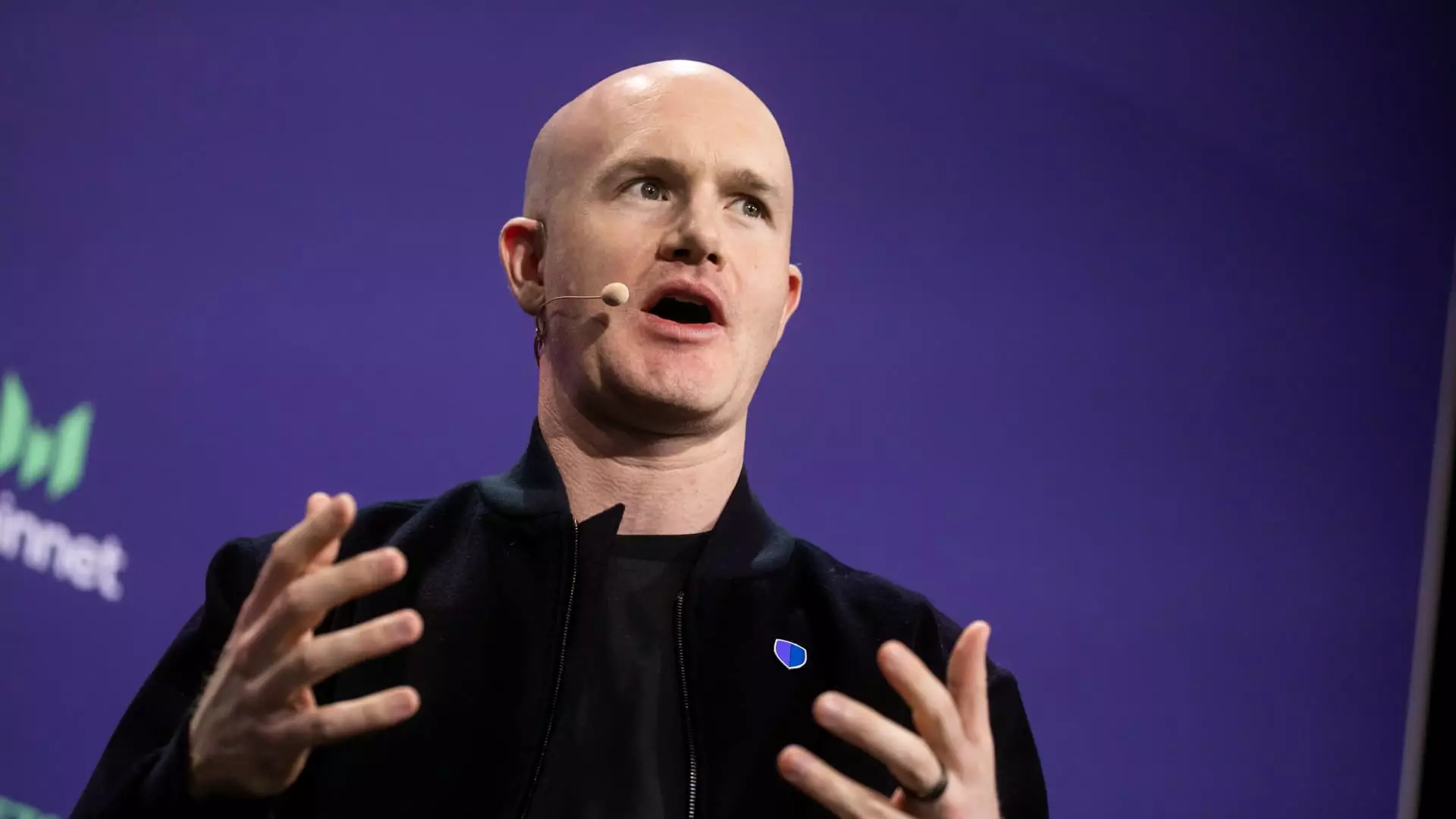In an era marked by digital disruption, Coinbase CEO Brian Armstrong is not merely a bystander. His vision for Coinbase extends far beyond being a cryptocurrency exchange; he aspires for it to evolve into a colossal financial services powerhouse within the next decade. During a recent earnings call, Armstrong expressed an optimistic outlook on the crypto landscape, suggesting that traditional financial institutions are beginning to embrace cryptocurrencies at an unprecedented rate. This enthusiasm is not misplaced; in fact, it underscores a profound shift in the global financial ecosystem that may redefine how we view and utilize money.
Armstrong’s forward-looking philosophy stands in contrast to the traditional mindset many financial leaders possess. Instead of pausing to reflect on past successes or failures, he urges stakeholders to understand the transformative potential of technology and to “skate to where the puck is going to be.” This approach advocates for proactive adaptation in a rapidly evolving market. The observation that “crypto is eating financial services” reflects a fundamental belief that the blockchain is not just an alternative to fiat but a new paradigm altogether.
Bridging Traditional Finance and Digital Innovation
Focusing on an array of customer segments, including retail, small and medium enterprises, institutions, and developers, Armstrong charts a roadmap for Coinbase’s diverse service offerings. The platform’s emphasis on trading and payment solutions resonates with the evolving needs of these user groups. By integrating cryptocurrency into everyday financial transactions, Coinbase aims to create a seamless interface that simplifies access to these digital assets.
The recent regulatory shifts further reinforce this strategy. The U.S. Office of the Comptroller of the Currency (OCC) has cleared banks to engage with cryptocurrency assets, a move indicative of a growing acceptance within traditional finance. As these longstanding institutions look to innovate, Coinbase’s position as a crypto leader can serve as a valuable partner. With more than 200 institutional clients already leveraging its services, including major players like BlackRock and PayPal, the exchange is projecting itself as the catalyst for this transition.
A New Era for Stablecoins
As Coinbase diversifies its revenue streams, stablecoins have emerged as a crucial element of its growth strategy. Armstrong has lauded the increase in revenue tied to stablecoins, which has seen a remarkable uptick of 50% year-over-year. This surge reflects a systemic shift in how finances are viewed, pointing towards increased usage of cryptocurrencies as viable financial instruments rather than mere speculative assets.
The ideal of making USDC the number one stablecoin globally, currently a title held by Tether’s USDT, showcases Armstrong’s ambition. His contention that stablecoins should have interoperability with various financial institutions highlights a crucial realization: movement towards a cohesive digital finance ecosystem is necessary for widespread adoption. By advocating for shared economic partnerships, he envisions a future where banks collaborate rather than compete in the digital space.
The Road Ahead
As Armstrong gazes into the future, he foresees an era where major banks inevitably integrate cryptocurrencies into their offerings. The ongoing regulatory changes signal a willingness among institutions to explore innovative solutions like stablecoins. With traditional financial players slowly but surely coming around to this digital revolution, the potential for Coinbase to tap into that growth is immense.
However, navigating the tumultuous waters of regulation will require careful strategizing and adaptability. The recent leniency from U.S. regulatory bodies could prompt a rush to enter the crypto space, but it might also invite increased scrutiny and potential pitfalls. For Coinbase, the challenge will be to maintain its leadership position amid this influx of competition while staying aligned with evolving regulatory landscapes.
By revitalizing financial interactions through blockchain technology and fostering partnerships with traditional players, Coinbase aims to carve out its stature as a major player in the financial services arena. The future is uncertain, yet Armstrong’s ambitious visions are painting a robust narrative of a financial revolution ready to unfold.

